Disclosure: This article contains affiliate links. We may earn a commission from purchases at no extra cost to you, which helps our travel content.
The morning light in Ouagadougou hits differently—it spills across the rust-colored earth and illuminates the city's unique blend of traditional Mossi architecture and French colonial influences in a way that makes my designer heart skip a beat. When I first arrived in Burkina Faso's capital five years ago, I expected a brief stopover. Instead, I found myself canceling onward plans, captivated by a city that defies expectations at every turn. Ouaga (as locals affectionately call it) isn't on most backpackers' radars, which is precisely why budget travelers seeking authentic cultural immersion should consider it. The lack of mass tourism creates opportunities for genuine connections with locals and a chance to witness West African urban life beyond the usual tourist circuits. Despite recent security concerns in parts of the country, Ouagadougou itself remains a vibrant, welcoming hub where $30 a day goes surprisingly far—allowing you to experience everything from traditional craft markets to contemporary art galleries, bustling street food scenes to impromptu musical performances. This guide will show you how to navigate this fascinating city thoughtfully and affordably while supporting the local economy.
Understanding Ouagadougou: Context Before You Go
Before diving into the practicalities of budget travel in Ouagadougou, it's worth understanding what makes this city so special. As the cultural and economic heart of Burkina Faso, Ouaga offers a fascinating window into a country that has produced some of West Africa's most innovative artists, filmmakers, and architects.
The city's name itself—which admittedly takes practice to pronounce (wah-gah-DOO-goo)—comes from the Mooré language and means 'where people get honor and respect.' This ethos permeates daily interactions here, where greetings and social protocols matter deeply.
During my first visit, I was immediately struck by the city's unique urban layout—a fascinating mix of grid-patterned central districts from the French colonial era surrounded by more organic, traditionally-organized neighborhoods. The vernacular architecture here tells stories that formal guidebooks often miss: homes built from locally-sourced materials with intricate geometric patterns that have influenced generations of West African design.
Before traveling, I highly recommend reading West Africa guidebook and brushing up on basic French phrases (the official language) and a few Mooré greetings. Understanding Burkina Faso's complex political history—including Thomas Sankara's revolutionary period and the more recent democratic transition—provides crucial context for appreciating the resilience and creative spirit that defines contemporary Ouagadougou.
The city has faced challenges in recent years, including security concerns in the northern regions of the country. Always check current travel advisories before booking and register with your embassy upon arrival. While the capital itself has largely remained stable, staying informed is essential for responsible travel here.
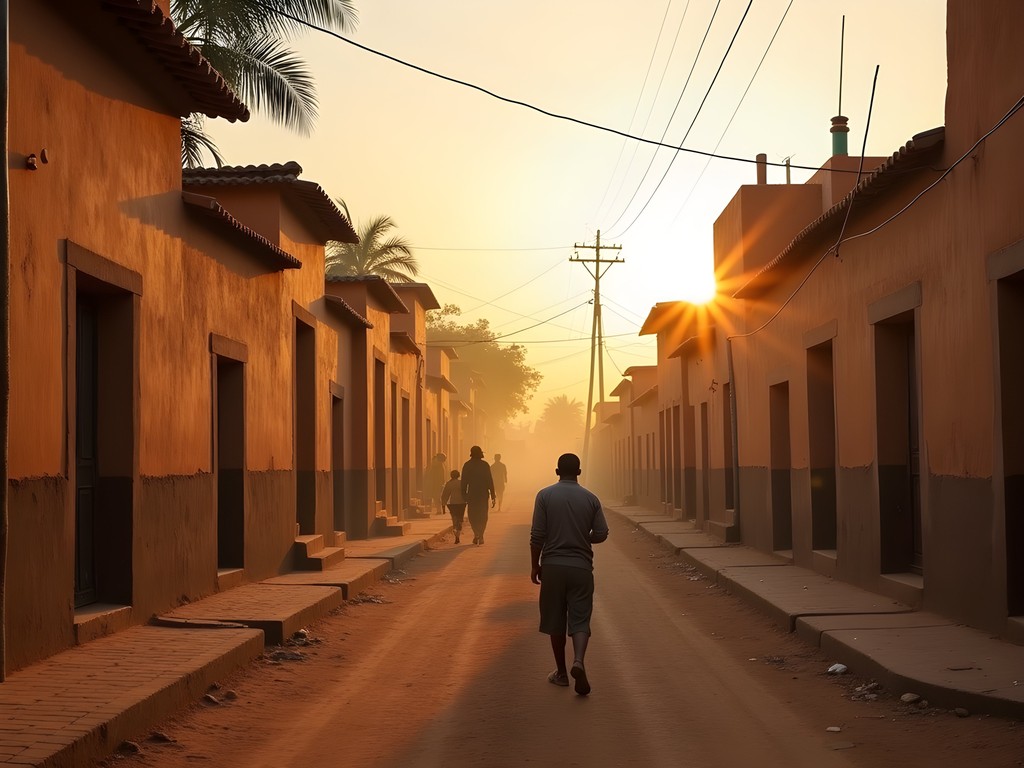
💡 Pro Tips
- Learn basic French phrases—English isn't widely spoken outside tourist areas
- Download maps offline as internet connectivity can be unreliable
- Register with your embassy upon arrival for safety updates
Budget Accommodation: Where to Rest Your Head
Finding affordable accommodation in Ouagadougou requires looking beyond traditional hotel booking sites, which typically list only mid-range and luxury options. During my stays, I've discovered that the city offers excellent budget options that provide authentic experiences while supporting local families.
Hostels are limited, but home stays represent the sweet spot for budget travelers. My favorite discovery was Chez Pauline in Gounghin neighborhood, where I paid just 5,000 CFA (about $8) per night for a simple room in a family compound. Beyond the financial savings, staying with Pauline offered invaluable cultural insights—from impromptu language lessons to invitations to family celebrations. To find similar arrangements, ask at the Centre Artisanal or connect through university student groups.
For those preferring more privacy, small guesthouses called chambres de passage offer basic but clean rooms for 7,000-10,000 CFA ($12-17) per night. These typically include a fan (essential during hot months) and shared bathroom facilities. The Dapoya and Zogona neighborhoods offer several options near university areas. While these won't appear on major booking sites, a quick visit in person usually secures a room.
If arriving late at night when exploring unknown neighborhoods isn't advisable, I recommend booking your first night at Pavillon Vert or Hotel de la Libération—both offer basic rooms starting around 15,000 CFA ($25). While this stretches the daily budget, having a secure first night allows you to search for cheaper options the following day.
Wherever you stay, I always travel with my portable door lock for added security and peace of mind, especially in shared accommodations or places with simple door locks. It's lightweight, installs in seconds, and has been invaluable during my solo travels throughout West Africa.

💡 Pro Tips
- Ask about weekly rates for discounts of 20-30% on longer stays
- Bring a lightweight cotton sleep sheet for basic accommodations
- Confirm if mosquito nets are provided; if not, pack your own
Eating Like a Local: Food on a Shoestring
Food represents one of the greatest joys of traveling in Ouagadougou—and fortunately for budget travelers, the most delicious options are often the most affordable. The city's culinary landscape blends traditional Burkinabé dishes with influences from neighboring countries, creating a distinctive food scene that's easy to navigate on just $10-12 per day.
Start your mornings like locals do at small roadside stands selling café au lait (strong coffee with sweetened condensed milk) for 200 CFA (about $0.35) and freshly fried beignets or galettes (bean cakes) for another 200-300 CFA. This hearty breakfast will fuel your morning explorations for less than a dollar.
For lunch, the university area near the University of Ouagadougou offers excellent maquis—open-air eateries serving set plates of rice or tô (millet or corn paste) with various sauces for 500-1,000 CFA ($0.85-1.70). My personal favorite is Maquis La Détente, where the peanut sauce (mafe) served with rice and vegetables becomes a hearty meal for just 700 CFA.
Dinner presents similar budget-friendly options, though I often gravitate toward the night market near the Grand Marché, where grilled meat skewers (brochettes) cost 300-500 CFA each. Three or four of these with a side of alloco (fried plantains) makes a satisfying meal for under $3.
Staying hydrated is crucial in Ouagadougou's heat. Rather than buying multiple plastic water bottles, I travel with my trusty water purifier bottle which has saved me countless dollars while reducing plastic waste. One press purifies questionable tap water in just 15 seconds—it's been indispensable throughout West Africa.
For those craving familiar flavors, Le Verdoyant café offers decent espresso and French pastries, though at 1,500-2,000 CFA, these represent a splurge. Instead, embrace local specialties like dégué (yogurt with millet) from street vendors for a refreshing afternoon treat at just 300 CFA.

💡 Pro Tips
- Always greet vendors with 'Bonjour' before ordering—respect goes a long way
- Look for busy food stalls with high turnover for the freshest options
- Carry small bills (100-500 CFA notes) for street food purchases
Cultural Immersion on a Budget
Ouagadougou's greatest attractions aren't expensive monuments or museums—they're the vibrant cultural experiences that often cost little to nothing. As someone passionate about design and cultural preservation, I've found this city offers extraordinary opportunities to witness living traditions and contemporary artistic expressions without stretching your budget.
The Musée National should top your list, with its excellent collection of traditional masks, textiles, and everyday objects that showcase Burkina Faso's diverse ethnic groups. The 1,000 CFA ($1.70) entrance fee is a bargain for understanding the cultural context of what you'll see throughout the city. Ask for English explanations if the French placards are challenging.
The true heart of Ouagadougou's creative energy lies in its artisan districts. The Centre Artisanal near the central market houses dozens of workshops where craftspeople create everything from bronze sculptures to indigo-dyed textiles. Unlike tourist-oriented craft markets elsewhere in Africa, prices here remain reasonable—beautiful hand-woven cotton scarves start around 3,000 CFA ($5). I spent entire afternoons sketching and chatting with weavers who were happy to demonstrate their techniques once they realized my genuine interest.
For contemporary art enthusiasts, Art Center Olorun showcases emerging artists with free exhibitions. The center often hosts evening discussions with artists (also free) that provide fascinating insights into how younger generations interpret traditional motifs and address modern challenges through their work.
Music permeates daily life in Ouagadougou. While formal concerts might cost 5,000-10,000 CFA, impromptu performances happen regularly in neighborhood spaces. Ask locals about grins—informal gathering spots where musicians often play. My most memorable evening involved stumbling upon a balafon (traditional xylophone) player practicing in a small courtyard—he welcomed me to sit and listen for hours without expectation of payment (though I later purchased his handcrafted instrument as a meaningful souvenir).
To document these rich cultural experiences, I rely on my compact camera which captures beautiful images even in challenging lighting conditions without drawing too much attention or requiring bulky equipment. Its flip screen has been perfect for discreetly framing shots in markets and during performances.
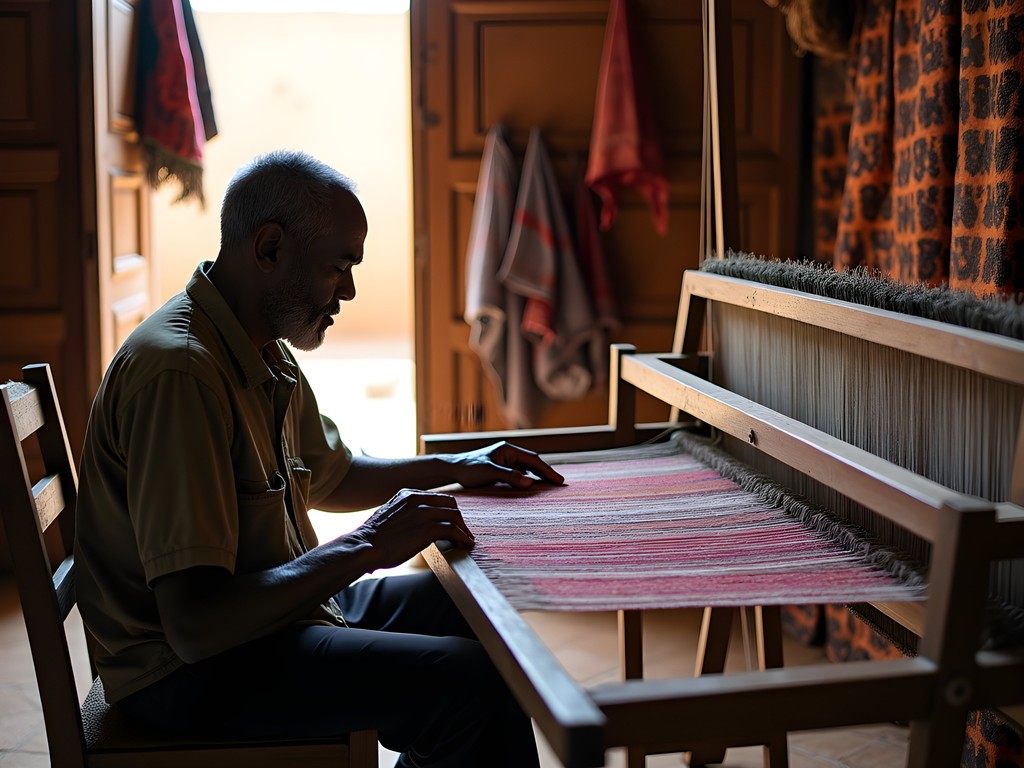
💡 Pro Tips
- Ask permission before photographing people or cultural ceremonies
- Carry a small sketchbook—drawing often creates connections where language fails
- Learn about the significance of traditional patterns and symbols to appreciate crafts more deeply
Getting Around: Transportation Strategies
Navigating Ouagadougou efficiently is essential for sticking to your $30/day budget, as the city sprawls considerably despite having few tall buildings. Fortunately, transportation options are affordable if you know how to use them like a local.
The most economical way to explore is by walking during the cooler morning and evening hours. The central districts around Avenue Kwame Nkrumah and the Grand Marché are relatively compact and pedestrian-friendly. I mapped out morning walking routes connecting key sites to avoid midday heat and found this approach offered invaluable street-level observations of daily life and architecture that I would have missed otherwise.
For longer distances, green taxis (shared collective taxis) run set routes throughout the city for just 200-300 CFA ($0.35-0.50) per trip. These unmarked vehicles can be confusing at first—they don't display route numbers or names—but locals are invariably helpful in directing you to the right one. Simply state your destination, and people will point you toward the appropriate taxi or tell you where to wait. The trick is learning to recognize the hand signals that indicate different destinations.
For more direct transportation, yellow taxis operate as private vehicles, but require negotiation before entering. A trip across central districts should cost 1,000-2,000 CFA ($1.70-3.40), though prices increase after dark. Always agree on the fare before departing, and don't be afraid to bargain politely—I typically start at half the initial asking price and settle somewhere in the middle.
Renting bicycles offers another budget-friendly option at around 2,000-3,000 CFA ($3.40-5.00) per day. Several small shops near the university rent sturdy city bikes that handle the occasionally rough roads well. However, be prepared for challenging traffic conditions and bring a bandana to cover your nose and mouth during dusty season (October-April). This versatile accessory has been invaluable during my trips—serving as dust protection, sun shield, and even an impromptu bag for market purchases.
For day trips to nearby attractions like Lake Bam or the sacred crocodiles of Bazoulé, sept-place taxis (shared minivans) depart from the northern bus station with fares between 1,000-3,000 CFA depending on distance. These fill quickly in the morning, so arrive by 7:30am to secure a seat.
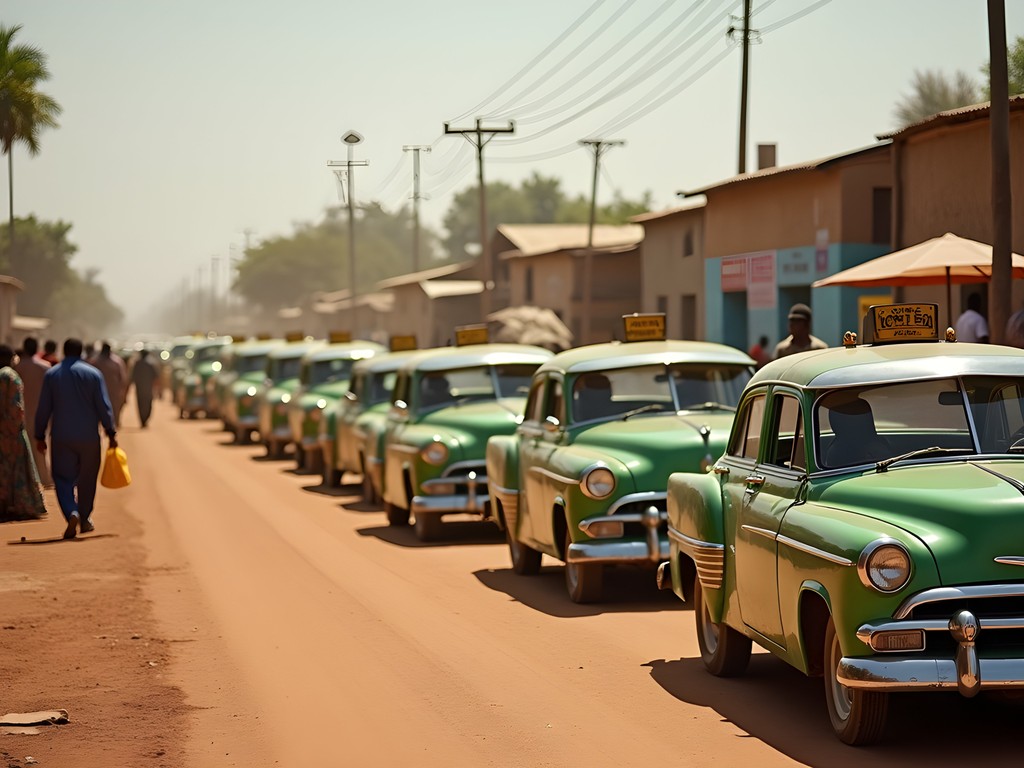
💡 Pro Tips
- Download Maps.me for offline navigation—Google Maps is less reliable here
- Learn the hand signals for shared taxis to flag the correct ones
- Avoid transportation after 10pm when options become limited and more expensive
Free and Nearly-Free Experiences
The soul of Ouagadougou reveals itself through experiences that cost little to nothing—perfect for travelers on a tight budget. Some of my most cherished memories from this vibrant capital came from simply being present in public spaces where daily life unfolds.
The Grand Marché (central market) offers endless people-watching opportunities as vendors and shoppers negotiate everything from fabric to fresh produce. While the rebuilt structure lacks some charm after the 2003 fire destroyed the original, the human energy remains unchanged. Wander without an agenda and you'll discover specialized sections for traditional medicines, handcrafted musical instruments, and more. I spent a fascinating afternoon sketching the intricate patterns of calabash bowls, which led to conversations with artisans about techniques passed through generations.
Jardin de l'Amitié (Friendship Garden) provides a welcome green respite from the city's dust and noise. This shaded park near the National Museum becomes particularly lively in early evenings when students gather to study and families enjoy picnics. Bring a book or journal and settle onto a bench—you'll likely find yourself in conversation with curious locals within minutes.
For architecture enthusiasts like myself, the Cathedral of Ouagadougou represents a fascinating blend of European church design and West African aesthetics. The striking red laterite stone structure is open to respectful visitors outside of service times, and donations are voluntary.
The most authentic cultural experience costs only your time and openness: visiting a neighborhood grin. These informal gathering spaces (often simply plastic chairs under a tree) serve as community hubs where people share tea and conversation. If invited to join, accept the gesture—it's through these unstructured interactions that I gained my deepest insights into local perspectives and daily concerns.
Dusk brings a magical transformation to Monument des Héros Nationaux (Monument to National Heroes), where the changing light on the modernist sculpture creates stunning photo opportunities. The surrounding plaza fills with young people practicing dance routines, informal sports matches, and families out for evening walks.
Film enthusiasts should time their visit to coincide with FESPACO (Pan-African Film Festival), held every odd-numbered year. While official screenings require tickets, many free outdoor projections happen throughout the city during the festival, turning neighborhood walls into community cinemas under the stars.

💡 Pro Tips
- Visit markets in early morning (7-9am) for the best atmosphere and temperatures
- Carry a small gift (photos from your country or postcards) to reciprocate hospitality
- Learn to prepare and share traditional tea if invited to a grin—it's a bonding ritual
Final Thoughts
As my week in Ouagadougou drew to a close, I found myself calculating expenses with surprising results—I'd averaged just $27 per day while experiencing a depth of cultural immersion that far exceeded my expectations. Beyond the financial accessibility, what makes this city special is the genuine openness of its people and the vibrant creativity that pulses through its dusty streets. Backpacking here isn't just about stretching your budget—it's about slowing down to appreciate a place where traditional craftsmanship still thrives alongside contemporary artistic expression. For students and budget travelers willing to venture beyond conventional destinations, Ouagadougou offers profound rewards: meaningful connections with locals, insights into West African urban life, and the satisfaction of navigating a complex city on your own terms. As you plan your own journey here, remember that your presence—and your spending choices—directly impact local communities. Choose homestays over international hotels, eat at family-run establishments, and purchase crafts directly from artisans. In doing so, you'll not only stretch your budget but contribute to the preservation of cultural traditions that make Ouagadougou such a fascinating destination.
✨ Key Takeaways
- Homestays and local guesthouses offer authentic accommodation for $8-15/night
- Street food and local eateries provide delicious meals for under $10/day
- The most meaningful experiences (markets, public spaces, cultural gatherings) cost little to nothing
- Learning basic French phrases and cultural protocols enhances connections with locals
- Sustainable budget travel supports local economies while preserving cultural traditions
📋 Practical Information
Best Time to Visit
October-December (early dry season)
Budget Estimate
$25-30 per day
Recommended Duration
5-7 days
Difficulty Level
Challenging

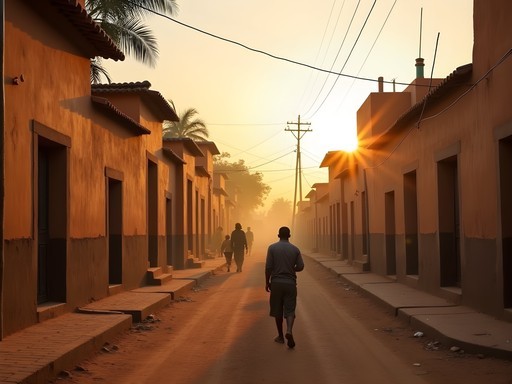
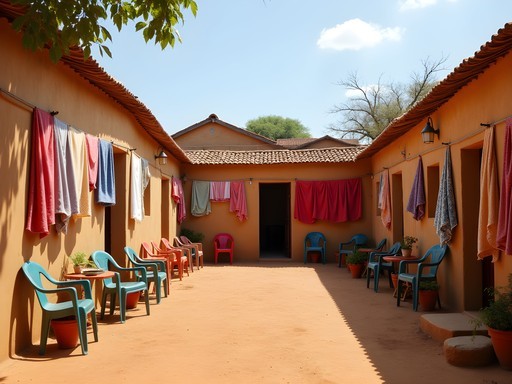
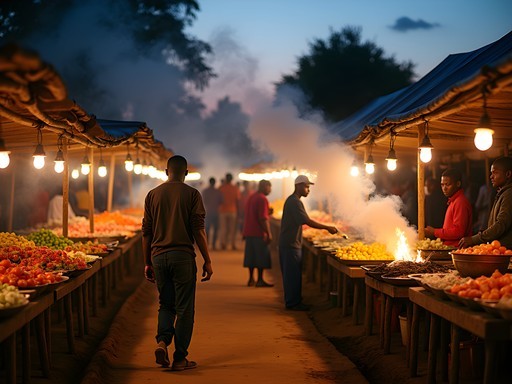
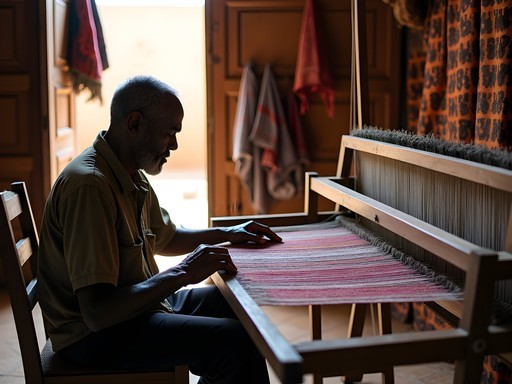
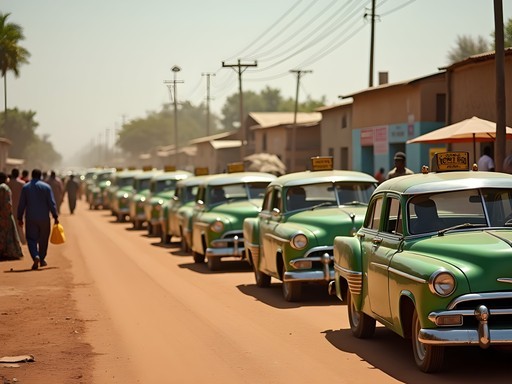
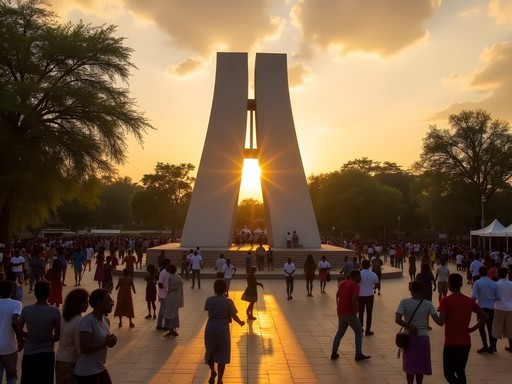


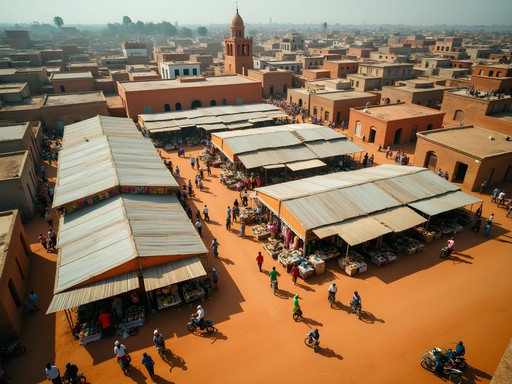
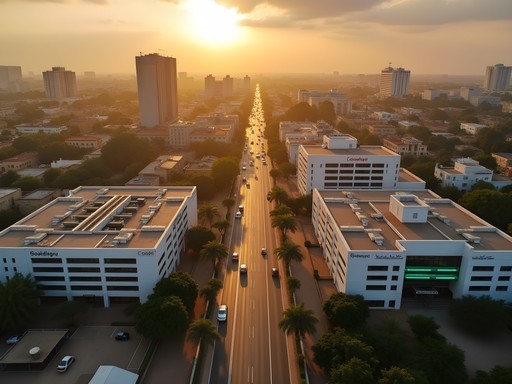


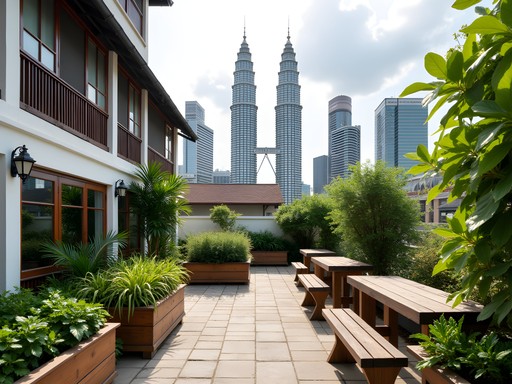
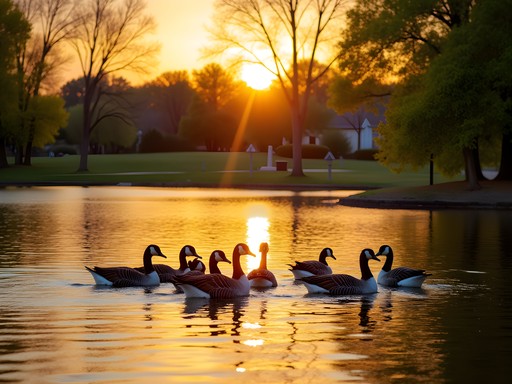
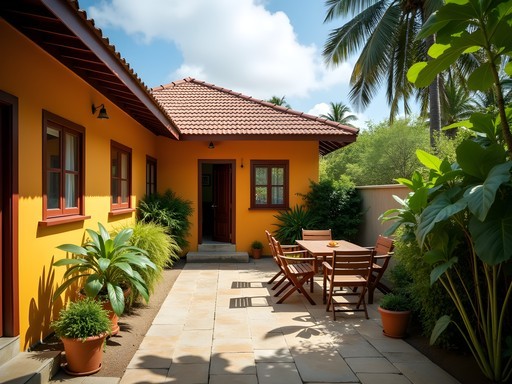
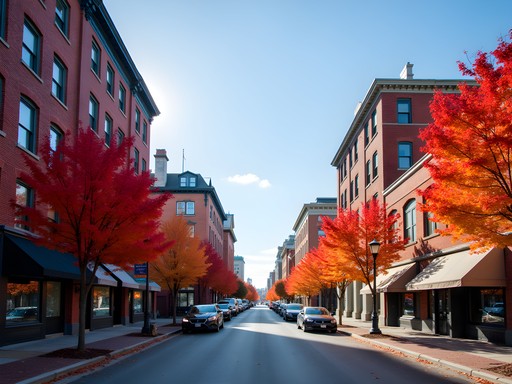
Comments
sunnyclimber
Planning to visit in October! How did you handle the language barrier? My French is very basic and I don't know any Mooré at all. Did you find English speakers in the budget places?
Olivia Sanchez
October is a good time to visit! The language barrier can be challenging - most budget places have some staff with basic English, but having a French phrasebook really helped me. I found younger Burkinabé often spoke some English, especially around the university area. Learning just a few greeting words in Mooré made locals smile and often got me better prices!
luckyexplorer
I've traveled through several Francophone West African countries with just Google Translate offline French pack. Works in a pinch!
Douglas Bradley
This brings back memories of my visit to Ouagadougou in 2023! I'd add that the Maison de la Culture is absolutely worth the small entrance fee, especially if you time your visit with one of their traditional music performances. I'd also recommend the small food stalls near the Grand Marché for incredible bean cakes (benga) that cost almost nothing. One thing to note about transportation - while the green taxis are affordable as you mentioned, I found negotiating shared taxis (with locals) saved me even more. Just be prepared to squeeze in with 6-7 others! I documented the whole experience in my West Africa series last year.
sunnyclimber
Those bean cakes sound amazing! Did you try the bissap drink too? It was my favorite when I visited.
Douglas Bradley
Absolutely! Bissap was my daily refreshment. I carried my water bottle everywhere and would fill it with bissap from the local vendors. Much cheaper than buying bottles each time!
luckyexplorer
Wow, $27/day in Ouagadougou is impressive! Did you feel safe in the budget accommodations?
Olivia Sanchez
Thanks! I actually felt very safe in most places. The key was reading reviews carefully and choosing places where other solo female travelers had stayed. The staff at Pension du Centre were particularly helpful with security tips.
luckyexplorer
That's good to hear! Adding it to my list for next year.
springguide
That sunrise shot over the city is absolutely stunning! What camera do you use?
dreamgal
Is it safe for solo female travelers?
Sarah Powell
I traveled solo and had no major issues. Common sense applies - don't walk alone at night, dress modestly, and learn basic French. The people are generally very friendly and helpful!
smartchamp
Been there twice. Don't miss the Naba palace if you go. And bring cash, ATMs unreliable.
Gregory Boyd
Excellent post that captures the essence of budget travel in West Africa! I've backpacked through most of the region, and Ouagadougou often gets overlooked. The $30/day budget is realistic if you're willing to embrace local life. I'd emphasize that the cultural performances at the Village Artisanal are often free or very cheap on certain days - worth checking their schedule. For accommodation, I stayed at the same place you mentioned near Gounghin market and can vouch for its cleanliness. One thing to note for other travelers: the water situation can be tricky, so I always carried a good filter bottle. The street food near the central university area was my go-to for dinner - those grilled plantains with spicy sauce were a game-changer! Did you make it to any of the music venues? The live djembe performances are incredible value.
skymaster
How's the internet there? Need to work remotely.
Gregory Boyd
Not Olivia, but I was there recently. Internet is patchy at best. I used my portable hotspot and bought a local SIM. Cafes near the university have decent WiFi though.
Sarah Powell
Great breakdown of costs in Ouagadougou, Olivia! I was there last year and can confirm your budget is spot-on. I'd add that the Grande Marché is a must-visit, but be prepared to haggle hard. One tip I'd add: the shared taxis (green ones) are cheaper than the yellow taxis if you're comfortable with the local transport scene. Also, I found the Airbnbs slightly outside the city center offered better value than the hostels you mentioned. Did you get a chance to visit the artisan village in Gounghin? The craftsmanship there is incredible!
sunnywanderer
Did you feel safe using those green taxis as a solo female traveler? Planning my trip for next month!
Sarah Powell
I did feel safe, but I always made sure to only take them during daylight hours and had my route mapped out beforehand. Having basic French phrases helped tremendously!
sunnywanderer
Thanks! Downloading a French phrase app right now!
springguide
Wow, never thought about Burkina Faso as a backpacking destination! Your photos are amazing! Adding to my bucket list!
Venture X
Premium card with 2X miles, $300 travel credit, Priority Pass